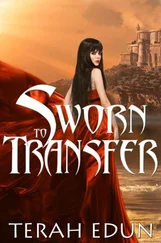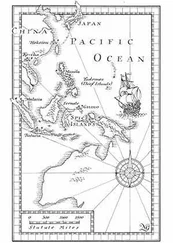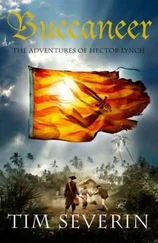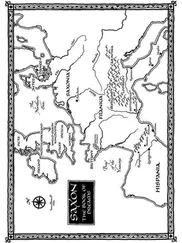Like Knut, the new Earl of Orkney was of the coming generation — energetic, ambitious and completely without qualms. His name was Thorfinn, and Herfid was in luck. The young earl was looking for a skald to enhance his reputation and Herfid was given the job, initially on approval. Afterwards — as I learned — his post was made permanent when Thorfinn heard that he was becoming known as 'the Mighty', a phrase that Herfid had used to describe him.
To my astonishment, the earl's grandmother Eithne was still alive. I had not seen her for almost eight years, yet she seemed to have changed hardly at all. Perhaps she was a little more stooped, and even more of her hair had fallen out, so that she kept her headscarf knotted securely under her chin. But her mind was as alert as ever.
'So another battle nearly killed you,' she wheezed at me by way of greeting. I was not surprised. Eithne was acknowledged to be a volva, a seeress, and there was little that she did not know or divine. She was the one who had told me that I was a spirit mirror, my second sight occurring most frequently when I was with someone else who had the gift.
'There's something I want to ask you about,' I said. 'There was a vision which I do not understand, and I have not mentioned to anyone as yet.'
'Tell me about it.'
'It was during a sea fight. In the midst of the battle a hailstorm suddenly lashed us, chilling us to the bone. The wind which brought the hailstones always seemed to be in our faces, never to hamper our enemies. It blew so powerfully that it turned our arrows, nor could we hurl our spears against it. It was unearthly. Everyone thought so. Some of our men from Wendland and Witland cried out that magic was being used against us.'
'What did you think?' the old woman asked.
'I think our enemies had a supernatural ally. I saw her — it was a woman — she appeared in the hailstorm. At first I thought she was a Valkyrie come to carry away our dead, for she seemed unearthly and she rode the wind. But this woman was different. She had a cruel face, a cold eye and was in a frenzy, shrieking and raging at us, and pointing at us with a claw-like hand. Whenever she appeared, the hail flew thicker and the wind came in stronger gusts.'
Eithne gave a snort of derision at my ignorance. 'A Valkyrie indeed. Have you never heard of Thorgerd Holgabrud? That's who you saw.'
'Who's she?' I asked.
'Thrand could have told you,' she replied. 'She appeared at Hrojunga Bay, the first time the Jomsvikings were defeated. She is the patron Goddess of the northern Norwegians. Earl Haakon, who led the battle against the Jomsvikings, sacrificed his own seven-year-old son to her to obtain the victory. That sacrifice was so powerful that, even now, Thorgerd Holgabrud returns to ensure the extinction of the Jomsvikings. She is a blood drinker, a war witch.'
I must have looked sceptical because Eithne reached out and gripped me by the arm. 'Listen to me: signs appeared in Caithness and Farroes soon after the great slaughter at Clontarf. There the Valkyries did appear to Old Believers — twelve Valkyries, riding horses. They set up a loom in each place, using the entrails of dead men as weft and warp, fresh skulls as the loom weights and a sword as the beater. An arrow was their shuttle. As they wove, they sang of the men who had fallen. You may never have heard of Thorgerd Holgabrud, or her sister Irpa, but those Wends and Witlanders were right. A volva was working against you that day, someone invoking the hailstorm and the gale and inciting Thorgerd to fight against you. Learn from this event. Be on your guard against those who use the occult to defeat you.'
I forgot her words over the next few months and paid the price.
I arrived back in Iceland to find that Grettir was now a legend. Against all odds he was still at large and evading every attempt to hunt him down. What made his survival all the more remarkable was that no outlaw had ever had such a high bounty put on his head. Thorir of Gard had redoubled the reward he and his family would pay to anyone who killed or captured Grettir, and several bounty hunters had tried and failed to collect the prize money. I heard a great deal of chuckling about the fate of one of them. Grettir had overpowered him and forced him to undress and return home in only his underclothes. Other stories were more far-fetched and reminded me of when Grettir and I had robbed the barrow grave together. It was claimed that Grettir had thrown an evil troll-woman to her death over a cliff, that he had swum under a waterfall and found a giant living in a cave carpeted with men's bones, that he had shared a remote cave with a half-giant. On one point, everyone was agreed: Grettir was now living on an island in the north-west fiords.
'Why doesn't someone get together a group of like-minded fellows to go and capture him?' I asked.
My informant, a farmer from Reykholt with whom I was staying overnight, shook his head. 'You should see the island he's chosen for his retreat,' he said. 'Sheer cliffs that are near impossible to climb. The only way to the summit is by ladders and Grettir hauls them up whenever he sees a strange boat approaching. And he is not alone. His younger brother Illugi is living there with him and there's said to be a servant as well. A man called
Glaum or some name like that. There may be others, too. It's difficult to be sure. Grettir has allowed no one on the island since he took it over, though I've heard that the local farmers are furious. Previously they grazed a few sheep on the flat top of the island. Someone would go ashore, lower down a rope and the sheep would be hauled up one by one. After you got the sheep on the summit, you could go away and leave them there without a shepherd. There was no way the animals could get off.'
He said the island was called Drang, meaning 'sea cliff, and it was in the mouth of Skagafiord.
'Is there any way of getting out there?' I asked.
'There's a story that Grettir occasionally swims ashore, but that's impossible,' the farmer said. 'The island is too far out in the entrance to the fiord, and there are powerful currents that would sweep away a man and drown him. I think that tale is pure fantasy.'
It was odd, I thought to myself, how a farmer would believe in trolls and giants living under waterfalls, but not in a man's ability to swim long distances. Yet I had seen Grettir do just that in Norway.
When I stood on the shore of Skagafiord a few days later, I understood why the farmer had been so sceptical. Drang Island was far in the distance. Its shape reminded me of the massive blocks of ice which occasionally drifted into harbour at Eiriksfiord in Greenland when I was a boy. These ice mountains had stayed in the channel for weeks at a time, slowly melting. But the ice blocks had been a cheerful, sparkling white tinged with blue, and Drang Island was a dark, square, brooding oblong. It gave me the shivers. The thought of swimming across the intervening expanse of sea — I could see the tide swirl — was daunting. Someone on the mainland must be acting as a go-between, occasionally rowing out to the island to bring supplies and news.
I made a circuit of the fiord's shoreline, staying at one farmhouse after another, claiming to be looking for land to buy. Already I was travelling under an assumed name as I had no wish for Gunnhildr and her father to learn that I was back in Iceland. The only man to know of my return was Snorri Godi, that wily old chieftain, on whom I had called in order to discuss the redemption of my fire ruby. He still held the gem in safe keeping, and I had left with him the bulk of my silver hoard, asking that he wait before handing on the cash to Gunnhildr's family so that I had time to meet Grettir. I kept only enough silver with me to show the farmers of Skagafiord that I could afford their land prices.
Читать дальше








